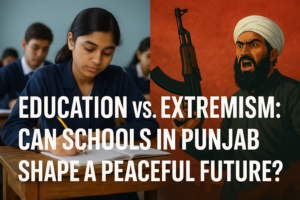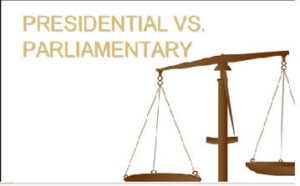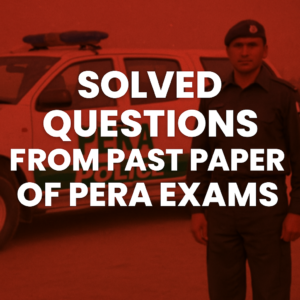Progress of any country depends upon its literacy rate & quality of education system in that country. Thus, education is the matter of life and death for Pakistan. – a country that already lags behind other countries of the world in so many aspects due to a fragile education system & weaknesses at other fronts. However, the education system of Pakistan is one of the oldest in the world. Former Secretary-General of the United Nations, Kofi Annan, aptly put his remarks about education saying: “Education is a human right with immense power to transform. On its foundation rest the cornerstones of freedom, democracy, and sustainable human development.”
As far as the education system of Pakistan is concerned it is also not free from flaws. Though various significant policy changes have been done in the education system of Pakistan ever since the inception of the country in 1947 still it is far away from perfection.
From lacking uniformity & consistent dropout ratio of students to manipulation of results and substandard system of assessment; the education system of Pakistan is full of fierce imperfections. The country’s education system needs a major overhaul to be in accordance with the needs of the modern world and to shift itself towards COVID-19 friendly safety protocols.
Before evaluating the Pakistani education system in detail one needs to get a brief overview of the country’s three-tier education system. Three-tier with the inclusion of school, college, and university education. To be more specific the country’s education setup can be divided into six various levels of education.
These levels include preschool (for the age from 3 to 5 years), primary (grades one through five), middle (grades six through eight), high (grades nine and ten, leading to the Secondary School Certificate or SSC), intermediate (grades eleven and twelve, leading to a Higher Secondary School Certificate or HSSC), and university programs leading to undergraduate and graduate degree programs.
Appreciable Things About Education System of Pakistan
A Steady Shift Towards Digitization
COVID-19 is there like an uninvited guest who stays for longer durations at a host’s place and unwilling to leave any soon. Hundreds of colleges and universities have shifted their mode of teachings and assessments towards digital ones from the traditional physical classes.
The majority of schools, colleges are still devoid of this fragile yet tolerable mode of education (online education) and unambiguously this transformation in the field of education is to stay here for sure at least for the times to come. Perhaps, the most surprising yet regrettable thing is the fact that the government in Pakistan is still in a mode to keep her head down in the storm and does not seems willing to undertake the responsibility of educating the enrolled students with the new innovative online tools.
The only lame excuse is the unavailability of budget allocation and other facilities for the purpose. The majority of schools in the public sector are lacking the necessary skills and provisions for online education. Online dengue activities, pseudo-enrollment campaigns for increasing the number of students enrolled, and opening of education institutions for physical classes have the mere focus of our respectable education authorities at least for more than a year that all of us spent under the shadow of COVID-19 Pandemic.
However, the good and appreciable thing is the fact that at least some people are aptly realizing the responsibility of online dispensation of education within and outside of the country to educate the youth of this country.
Rapid Enrollment Drives
Enrollment drives by Punjab Minister for School Education Murad Raas in cooperation with district education authority officers and school councils is yet another matter that deserves applause because this enrollment is aimed at ensuring at least a million students back into schools. This campaign is still ongoing in different districts of Punjab aiming to compensate the majority of students who had left schools due to the months-long closure of schools in the wake of the coronavirus pandemic.
However, this kind of effort sounds unpractical in the sense that who among the parents would like to bear the brunt of school expenses at the time when almost all the educational institutions are closed at least in the public sector institutions that are championing the enrollment drives.
Moving Towards the Uniformity of Syllabi
Another remarkable feature of the country’s education system is the inclusion of a Single National Curriculum. The single national curriculum entails the idea of one system of education for all, in terms of curriculum, the medium of instruction, and a common platform of assessment to ensure equity in education. The SNC is indicative of Naya Pakistan where education is aligned to the emerging international trends in teaching, learning, and assessments, that develop analytical skills, critical thinking in students.
The idea of SNC sounds inspiring and vandalizing the decades-old apartheid in the education system of Pakistan. Reportedly, SNC is aspired to be implemented across the board in all schools of Pakistan including government and private schools and religious seminaries contrary to the 2006 curriculum that was implemented only in government schools and in some of the low-budget private schools.
The SNC, if implemented, would somehow address the syllabus disparity in educational institutions although it is perceived as a tool in controlling the overall opinion of the people across some quarters.
Optimism Related To The HEC’s New Ph.D. policy
HEC’s new Ph.D. policy has mandated a number of quality-oriented standards that may bring the educational framework at par with academically advanced countries. One of the most important of these is that the minimum requirement of a B.S. or equivalent degree for admissions to Ph.D. programmes.
This would enable the students to develop in-depth expertise in their field through consistent immersion in a single rigorous programme. The reason why a large number of top-ranked universities in the world have adopted this criterion is the fact that direct admissions from BS to Ph.D. programmes not only enhance quality and professional skill-development of students but also saves students’ time and money that they spend on lengthy routes to achieve higher education otherwise.
It is important to note that direct admissions into doctoral programs after Bachelor’s degrees (equivalent to 16 years of education) is now common practice in big universities across the world. For instance, in the universities (including Ivy League universities) in the US. Oxford, Cambridge, and other universities in the UK, as well as top universities in Canada, Australia, New Zealand, and other academically advanced countries also allow holders of Bachelor’s or undergraduate honors degrees to enroll in a large number of Ph.D. programmes.
Students who first earn a Master’s degree and then proceed to a Ph.D. programme have a more fragmented experience, where they first complete a short Master’s programme and then separately a short Ph.D. programme. Another advantage is that admissions committees will have a larger pool of applicants to choose from, and can decide to enroll high-quality BS graduates (who would be required to complete more courses than those with Master’s degrees).
Multiple Scholarship Programs for Students
Multiple foreign aided as well as indoor scholarship programs are an indication of a sufficiently good move. Essays Undergraduate Scholarship is one such program that aims to eliminate the educational poverty of youth. Under this program alone, the government aims to provide scholarships to 50,000 deserving students.
National Human Development Report also apprised the consistent efforts of Pakistan saying that Pakistan is one of the youngest countries in the world. Realizing its demographic reality which has a population of around 220 million out of which more than half are of the university-age cohort, the priority of the Government of Pakistan is to work on such programs which give the drive to provide access to financially deserving and also encourages gender equity. The strategy is to create opportunities for a sizeable segment of youth to bring them under the net of higher education and create equal educational opportunities for all.
Issues and Problems Associated with the Education System
Low Educational Funding in the Government Sector
Educational funding in Pakistan still lags behind the other countries of the region. Despite governments’ efforts to lessen the syllabus disparity and to decrease the number of out of the school children, educational funding at the national level is far from equity.
The low spending on education comes at a cost and the deplorable situation of an existing network of education within the provinces is a clear indication of that aspect. The buildings of schools and colleges are less spacious to adjust the enrolled students effectively. There is poor to no availability of education-related tools and avi-aids. The dearth of online education facilities also owes its existence due to low budgetary allocations for education.
Pakistan is ranked 152 out of 189 countries in the United Nations Development Programme’s (UNDP) Human Development Index (HDI) ranking, according to the Human Development Report, 2019. Unfortunately, Pakistan has not exhibited improvement in key educational indicators, such as literacy rate, gross enrolment ratio, and expenditure on education, as compared to regional countries (Table 10.1). Pakistan’s literacy rate of 57 percent lags well behind its neighboring countries. The primary school dropout rate is 22.7 percent (3rd highest in the region after Bangladesh and Nepal), which is alarming.
The current education budget of Pakistanis just 2.5 % of GDP whilst Nepal 2.7%, Srilanka 3.2%, India 3.5%, and Bangladesh is 3.5%. The low education budget shows the negligence of education. Remember, 95 percent of the education budget is incurred on salaries and maintenance.
In-Conducive Educational Environment
Moreover, the environment of educational campuses is not conducive to intellectual pursuit, and in the lecture halls, critical discourse is virtually considered a sin or presumed anti-religious. The environment of universities remains charged with the clouds of political, social, and now even religious differences with the mobs of students ready to revenge each other over a minor discord.
More recently such aggression happened at the Punjab University Lahore where a fight erupted between the two groups of students. Thanks to police contingents and guards who reached there to end the fight. The university administration was helpless to maintain the peace otherwise. This kind of incident happens in colleges as well and sometimes teachers are also part of this groupings.
Lack of Quality and Significant Research
Pakistani universities are not contributing enough in the areas of research and development or to the knowledge-based economy. This underlies the fact that our universities produce an army of job-seekers instead of entrepreneurs and businesspersons. Many among the rich businessmen of the country are those who are doing a job alienable to the premises of educational institutes.
Low Technological Skill Development
Low technological skills and a dearth of skilled labor unveils the dark side of Pakistan’s education system. Whether in Europe or the US, few Pakistanis work in high-tech fields such as engineering, computer science, machine learning, biotechnology, genetic research, etc. Western academia — both in liberal arts as well as sciences — has many Indians but few Pakistanis. While Pakistani doctors in the US and UK form a large wealthy group, they simply practice medicine and only rarely innovate.
Lack of Interactive Online Education
In educational institutions, there lies a dearth of interactive online sessions as well. An assembly of social media posts complaining about the online sessions by educated youth in Punjab, Sindh, and KP, AJK and Baluchistan made it clear that there is a complete absence of interactive online sessions in online education. Some teachers are entirely oblivious to the idea of online teaching and some others are unable to accomplish the task effectively due to low-quality internet services and the unavailability of tools required for online education.
Unemployed Youth
Unemployment is one of the biggest issues of Pakistan and it does include the educated youth as well. A report carried in the Express Tribune says there are 1,200 jobless PhDs in the country. Many of them hold doctorate degrees in highly specialized science subjects from the world’s top universities. They had been admitted to these universities on merit scholarships. They had to work hard to obtain their degrees, and despite their best efforts to get jobs commensurate with their high qualification, they have neither been absorbed in universities nor industries or any other sector.
Conclusion
In conclusion, the education system of Pakistan is not an exception to the flaws and imperfections of various nature but the good thing is that it is somehow supporting and educating the students even in the times of COVID-19 Pandemic.
The educational debate would, perhaps, remain in-comprehensive given the variety of challenges and areas of interest in the education system. I would like to conclude with the golden words by former United Nations Secretary-General, Ban Ki-moon, who said: “Education is a fundamental right and the basis for progress in every country. Parents need information about health and nutrition if they are to give their children the start in life they deserve. Prosperous countries depend on skilled and educated workers. The challenges of conquering poverty, combatting climate change, and achieving truly sustainable development in the coming decades compel us to work together. With partnership, leadership, and wise investments in education, we can transform individual lives, national economies, and our world.”
One can assuredly say that there is no set rule for making your country an all-out and progressive in the field of education due to the variety of circumstances as well as confronted challenges. By giving the relevant solution-oriented education, as well as necessary skill development of youth, can solve many of the problems associated with the educational system of the country.
There are no two ways in stating the fact that education remains the matter of life and death for Pakistan and to perform well on various fronts including the fields of health, aviation, and security all we need is the advancement in education as well as training.
📍 English Language Educator | Blogger & Content Strategist | 7+ Years in Educational Blogging
Nosheen Bashir is a dedicated English teacher and experienced blogger with over seven years of expertise in content creation and educational writing. Passionate about language, literature, and effective communication, she combines her teaching experience with blogging skills to create insightful, research-backed content that helps learners and educators alike.
🔹 Expertise & Achievements:
✔ English Language Education: A skilled educator with years of experience in teaching English grammar, literature, and communication skills to students of varying levels.
✔ Educational Blogging: Running a successful blog for 7+ years, delivering well-structured, engaging content on language learning, writing techniques, and academic success.
✔ SEO & Content Strategy: Specializes in creating high-ranking, authoritative articles that follow Google’s EEAT principles, ensuring content that is both informative and search-friendly.
✔ Student-Centric Approach: Committed to making English easier, engaging, and accessible, helping readers and students improve their language proficiency.
🚀 With a passion for teaching and writing, Nosheen Bashir is dedicated to crafting educational content that empowers students, teachers, and language enthusiasts worldwide.










